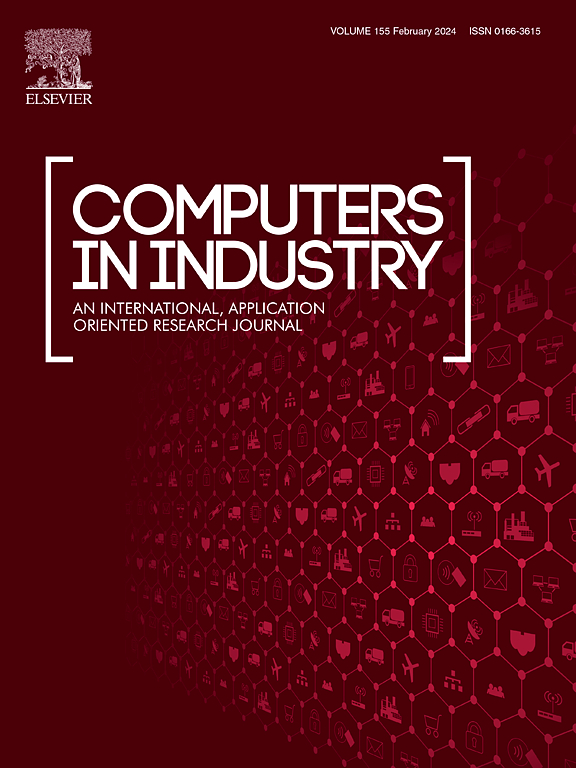激光切割工艺参数的混合优化机制与数据驱动方法
IF 9.1
1区 计算机科学
Q1 COMPUTER SCIENCE, INTERDISCIPLINARY APPLICATIONS
引用次数: 0
摘要
激光切割质量直接受到工艺参数的影响,工艺参数决定着毛刺的形成和热影响区的范围。因此,选择和优化这些参数对于获得高质量的激光切割结果至关重要。通过建立将工艺参数与质量指标联系起来的代理模型,机器学习技术已被证明在工艺参数优化方面是有效的。然而,这些模型往往忽略了激光切割过程中产生的关键温度场信息,这些信息提供了有价值的机械见解。为了克服这一局限性,提出了一种混合机制和数据驱动优化方法。首先,搭建了激光切割实验平台,采用五因子三水平全因子设计进行数据采集。然后建立详细的激光切割物理模型来模拟关键的温度场信息,弥补了现实场景中此类数据的缺乏。随后,设计了一种具有双输入分支的物理信息神经网络来处理低维工艺参数和高维温度场数据。此外,物理信息神经网络还包括一个聚焦融合层,该融合层具有一个关注机制,可以选择性地将最相关的机械特征与过程参数相结合。为了进一步优化训练后的物理信息神经网络模型,开发了一种聚类辅助多目标进化算法,该算法利用聚类策略选择和检索与候选过程参数最匹配的历史机制数据,确保有效的代理模型输入,提高优化效率。实验验证表明,所提出的混合方法明显优于传统的机器学习方法,在激光切割工艺参数优化方面具有更高的精度和可靠性。本文章由计算机程序翻译,如有差异,请以英文原文为准。
A hybrid mechanism and data-driven optimization method of process parameters in laser cutting
Laser cutting quality is directly influenced by process parameters, which govern the formation of burrs and the extent of the heat-affected zone. Consequently, selecting and optimizing these parameters is crucial for achieving high-quality laser cutting results. Machine learning techniques have proven effective in process parameter optimization by establishing surrogate models that link process parameters with quality indicators. However, these models often overlook critical temperature field information generated during laser cutting, which provides valuable mechanistic insights. To overcome this limitation, a hybrid mechanism and data-driven optimization method is proposed. First, a laser cutting experimental platform is developed, and the full-factorial design with five factors at three levels is employed for data collection. Detailed laser-cutting physical models are then established to simulate key temperature field information, compensating for the scarcity of such data in real-world scenarios. Subsequently, a novel physics-informed neural network is designed with dual input branches to handle low-dimensional process parameters and high-dimensional temperature field data. Besides, the physics-informed neural network includes a focused fusion layer with an attention mechanism to selectively integrate the most relevant mechanistic features with process parameters. To further optimize the trained physics-informed neural network model, a clustering-assisted multi-objective evolutionary algorithm is developed, which leverages the clustering strategy to select and retrieve historical mechanistic data that best match candidate process parameters, ensuring valid surrogate model inputs and improving optimization efficiency. Experimental validation demonstrates that the proposed hybrid method significantly outperforms conventional machine learning approaches, delivering superior accuracy and reliability in laser cutting process parameter optimization.
求助全文
通过发布文献求助,成功后即可免费获取论文全文。
去求助
来源期刊

Computers in Industry
工程技术-计算机:跨学科应用
CiteScore
18.90
自引率
8.00%
发文量
152
审稿时长
22 days
期刊介绍:
The objective of Computers in Industry is to present original, high-quality, application-oriented research papers that:
• Illuminate emerging trends and possibilities in the utilization of Information and Communication Technology in industry;
• Establish connections or integrations across various technology domains within the expansive realm of computer applications for industry;
• Foster connections or integrations across diverse application areas of ICT in industry.
 求助内容:
求助内容: 应助结果提醒方式:
应助结果提醒方式:


